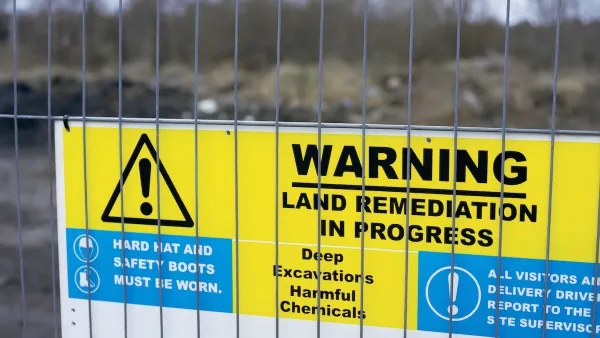A new book from Landscape Architect Professor Carl Smith provides designers with an easy-to-use checklist for building sustainable housing.
"Barren landscapes of concrete and broken glass first inspired landscape architecture professor Carl Smith's interest in sustainable residential design. "Pit houses" – cheap housing marooned in a sea of cement, built in the late 19th century for coalmine workers – helped him to appreciate the hedges, trees and plots of land that graced his own suburban neighborhood in Sheffield, England.
"Even as a small boy I could see that the design of housing has a pretty direct impact on people's lives," Carl Smith said. "We've got to provide a healthy environment where people can live and bring up their kids."
Smith has made a major contribution towards that goal with the recent publication of his book, Residential Landscape Sustainability: A Checklist Tool (Blackwell Publishing, 2008). Coauthored with Andy Clayden and Nigel Dunnett, the book draws on extensive research to summarize a complex topic, and promises to be the go-to guide for landscape architects, architects and planners who want to design sustainable housing. The book's clear prose, numerous charts and photographs make it an accessible text for students as well.
Topics range from time-honored planting strategies that provide shade and wind shelter to the latest techniques for storm water management. The authors carefully consider the environmental costs of various landscape materials, weigh in on the value of native and ornamental plants to achieve biodiversity, and make a strong case for investment in hike and bike trails, private gardens and communal green spaces."
FULL STORY: Sustainable Suburbs: Professor's New Book Creates Checklist for 'Green' Residential Development

Planetizen Federal Action Tracker
A weekly monitor of how Trump’s orders and actions are impacting planners and planning in America.

Maui's Vacation Rental Debate Turns Ugly
Verbal attacks, misinformation campaigns and fistfights plague a high-stakes debate to convert thousands of vacation rentals into long-term housing.

Restaurant Patios Were a Pandemic Win — Why Were They so Hard to Keep?
Social distancing requirements and changes in travel patterns prompted cities to pilot new uses for street and sidewalk space. Then it got complicated.

In California Battle of Housing vs. Environment, Housing Just Won
A new state law significantly limits the power of CEQA, an environmental review law that served as a powerful tool for blocking new development.

Boulder Eliminates Parking Minimums Citywide
Officials estimate the cost of building a single underground parking space at up to $100,000.

Orange County, Florida Adopts Largest US “Sprawl Repair” Code
The ‘Orange Code’ seeks to rectify decades of sprawl-inducing, car-oriented development.
Urban Design for Planners 1: Software Tools
This six-course series explores essential urban design concepts using open source software and equips planners with the tools they need to participate fully in the urban design process.
Planning for Universal Design
Learn the tools for implementing Universal Design in planning regulations.
Heyer Gruel & Associates PA
JM Goldson LLC
Custer County Colorado
City of Camden Redevelopment Agency
City of Astoria
Transportation Research & Education Center (TREC) at Portland State University
Jefferson Parish Government
Camden Redevelopment Agency
City of Claremont





























